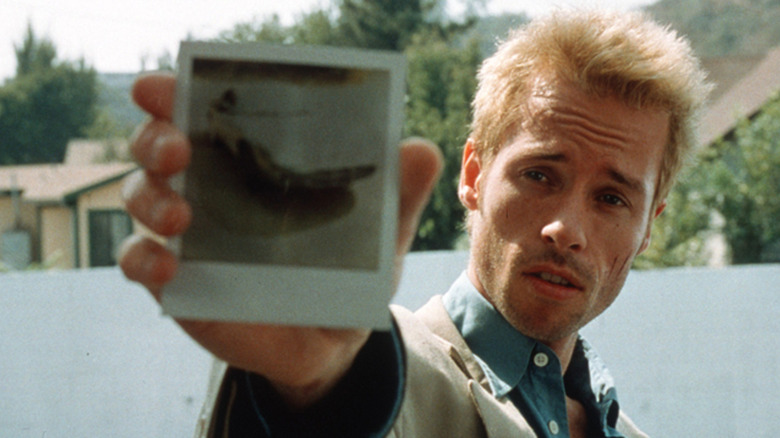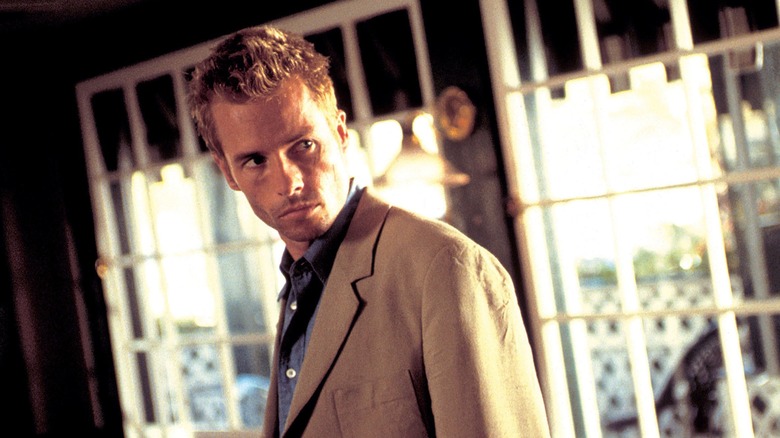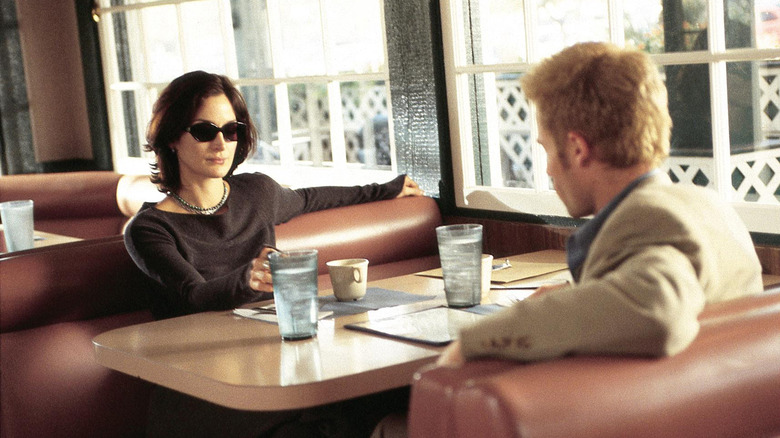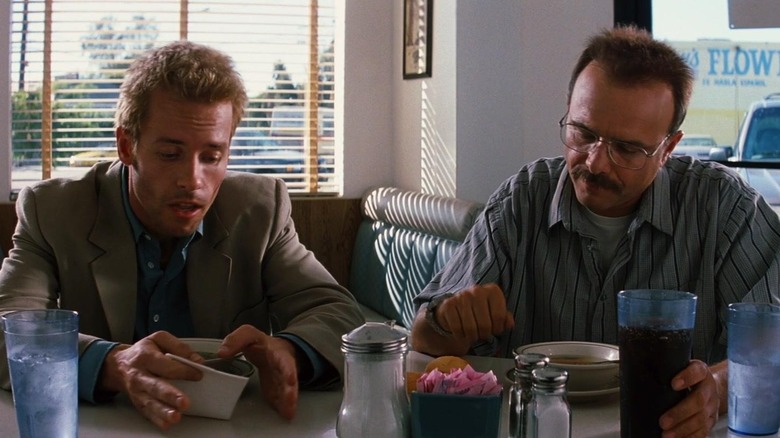Memento Ending Explained: Explained Ending Memento

Much like M. Night Shyamalan has doomed himself as forever Hollywood's twist-ending guy, Christopher Nolan has steadily become the crank who just can't stop himself tinkering with time.
I know this will upset a lot of Nolan fans, but his dedication to exploring this theme has become increasingly tiresome. What did the ponderous triple timescale in "Dunkirk" do other than make us take a step back from the drama and ask "why?" And don't even get me started on "Tenet." If you want a one-word review for the dreary spy thriller, think of a palindromic synonym for "excrement."
If that makes me sound like a Nolan-hater, let's think back to how fresh and bold Nolan's experiments with time and linearity felt when "Memento" first came out. I remember leaving the theater afterwards, emerging blinking and bewildered into the sunshine -- it was one of those rare cinematic experiences that seemed to change my perception of the world around me.
"Memento", Nolan's breakthrough after his little-seen debut "Following," announced the director as a major new talent, and fans still enjoy unpicking its tricksy narrative today. Tattoo it across your chest if you need to, because we're going to talk about the ending of "Memento"...
But First, The Plot...

"Memento" opens with a striking scene: a freshly developed polaroid photo of a man with his head blown off fades before our eyes, the photographer slips the photo back into the camera, a shell casing leaps back into a gun, and we briefly witness the slaying. Then we meet the killer -- Leonard (Guy Pearce), a former insurance investigator on the trail of the man who raped and murdered his wife. The twist is that Leonard suffers from severe anterograde amnesia, meaning he is unable to form new memories. He must conduct his entire investigation in 15-minute snippets, never completely sure about what he is doing or why in any given moment.
He's not about to let that stop him on his quest for revenge, and finds a workaround for the memory thing by taking polaroids, leaving notes for himself, and tattooing dead-cert clues onto his body. Living out of sleazy motel rooms, Leonard may or may not be receiving help and guidance from a dubious contact known as Teddy (Joe Pantoliano). He also meets Natalie (Carrie-Ann Moss), a treacherous diner waitress who uses his condition to her own ends.
When Leonard finally puts together the clues and tracks down the supposed killer, he comes to realize that he may have already had his vengeance several times before ... but what is that realization worth when he's about to forget it?
That Sounds Quite Straightforward...

Leonard's condition is pretty novel for an amateur sleuth in its own right, but the most striking aspect of Nolan's neo-noir is that the story is told through scenes alternating between chronological and reverse-chronological order.
Just to give you some hope of keeping track of where you are in the narrative, Nolan helpfully presents the reverse-order scenes in color, and the forward-moving scenes in black and white. The two timelines dovetail beautifully in the finale, where all the clues come together before Leonard himself resets the narrative and heads off on another manhunt.
"Memento" is a film that rewards repeat viewings. Not only is the screenplay so tightly interwoven that it might take a few views to piece it all together, it's also joy to rewatch just to appreciate how masterfully Nolan controls the narrative -- it's such an assured performance from the director. For its grim subject matter and fatalistic ending, "Memento" is also one of Nolan's most heartfelt and humorous films. As hellbent as Leonard is, Nolan doesn't forget to mine his predicament for a few well-timed laughs, something sorely missing from his more recent movies. Of course, it helps that he has Guy Pearce playing at the top of his game, making Leonard a driven protagonist really worth rooting for, with great supporting turns from Pantoliano as the obnoxious Teddy and Moss as the femme fatale of the piece.
Is Leonard's Condition A Real Thing?

While Nolan's devious Oscar-nominated screenplay certainly milks Leonard's anterograde amnesia for dramatic and sometimes comedic potential, experts in the medical community have praised "Memento" for how accurately it portrays the condition. Caltech neuroscientist Christof Koch hailed the film as "the most accurate portrayal of the different memory systems in the popular media."
Sufferers of the condition find themselves in the bewildering state of being unable to remember the recent past, while memories dating from before the event that caused the amnesia remain intact. This contrasts with retrograde amnesia, where patients are able to remember recent events while older memories fade away.
In her piece for The BMJ, "Memories aren't made of this: amnesia at the movies", clinical neurologist Sallie Baxendale writes:
"Unlike in most films in this genre, this amnesic character [Leonard] retains his identity, has little retrograde amnesia, and shows several of the severe everyday memory difficulties associated with the disorder. The fragmented, almost mosaic quality to the sequence of scenes in the film also cleverly reflects the "perpetual present" nature of the syndrome."
What all this doesn't quite explain is why Nolan chooses to portray Leonard's story and condition, at least in half the narrative, in reverse-chronological order. It's presented as if the two things are connected, but there is little more to it other than a stylish way to bamboozle the viewer. Since it's done so brilliantly, we can give him a pass on this occasion...
So What Happens At The End Of Memento?

When Leonard eventually tracks down the supposed murderer and kills him, he realizes that he has bumped off the wrong man. Teddy, whose full name also matches that of the guy Leonard has been tracking, reveals that he helped Leonard kill the real culprit ages ago, only to keep him on the trail of other scumbags in need of erasing. On hearing this, Leonard accepts that he has repeatedly lied to himself to satisfy his hunger for justice. Before his memory fades again, he sets up clues that paint a target on Teddy's back next.
Leonard is perhaps the ultimate unreliable narrator. His memory condition casts doubt on the veracity of his biased investigation, and he is murderously self-deluded in his final moment of clarity, ready to frame Teddy because revenge is the only thing that gives his life some purpose.
A few years earlier, Pearce played straight-shooter Ed Exley in "L.A. Confidential," the by-the-book detective whose morals are corroded by the cesspool of corruption around him. Like Exley, Pearce's earnest charisma and chiseled heroic looks make us instinctively side with Leonard, and it's devastating to find out what levels of self-deception he will stoop to in order to keep his rampage of revenge going. Meanwhile, poor Teddy. He is still untrustworthy in our eyes even when it becomes clear that he is telling the truth, perhaps because he is played by an actor as innately shifty as Pantoliano.
"Memento" is now regarded as one of the best films of the young century and puts some of Nolan's more bloated, self-serious work to shame. It's a puzzle of a thriller that remains hugely satisfying, no matter how many times you sit and put the pieces together.
Read this next: The 14 Greatest Action Movies Of The 21st Century
The post Memento Ending Explained: Explained Ending Memento appeared first on /Film.
from /Film https://ift.tt/3bhuPvj
No comments: